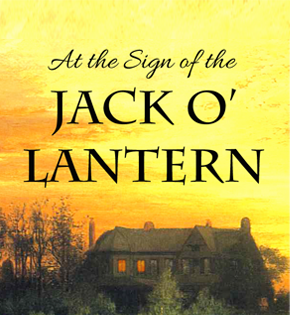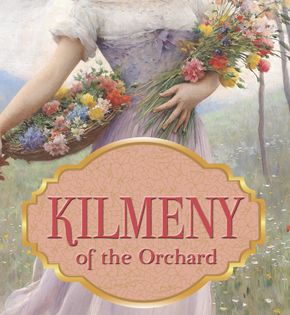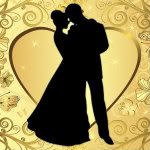In your Easter bonnet, with all the frills upon it,
You'll be the grandest lady in the Easter parade...
I love hats. I usually only wear them to church, so you’ll be sure to see me sport one five or six times a year on Sunday mornings because I think they are feminine and lovely and just plain fun. (I wish women still wore gloves all the time, too, and red lipstick and hose with a seam up the back, but since I don’t want to look like I’m in costume, I just stick with the occasional hat.) And of course I love to wear an Easter bonnet! Granted, my hat this year is a rather conservative straw number with an enormous black blow, but I love the fancier Easter bonnets women wear in the Easter Parade.
The tradition of dressing up for Easter goes back to people wearing their “Sunday best” to church for the holiday to honor the sacredness of the Holy Week. Easter Parades began as a way for the wealthy to show off their finery after attending church on Easter morning. There are many Easter parades, but the most famous is in New York on 5th Avenue, which began in the 1870s.
The origin of the Easter Parade is rooted in two significant events that took place during Holy Week. First, was Jesus’ triumphant entry into Jerusalem while riding a donkey, being called “Hosanna!” by a crowd waving palm branches. This is now known as Palm Sunday. The other “parade” was Jesus’ walk to Calvary, carrying his cross. But there is very little religious significance to modern parades. By the mid 19th century, churches began to decorate their sanctuaries with flowers, and the dressing up of the church caused the people to also dress up more. Over time, the trend turned to a display of wealth rather than spiritual devotion, and the commercialization of the holiday was not far behind. “As the parade and the holiday together became more important, dry goods merchants and milliners publicized them in the promotion of their wares. In 1875, Easter had been invisible on the commercial scene. By 1900, it was as important in retailing as the Christmas season is today.”
 Through the 1930s and 40s, the Parade’s popularity steadily increased, in part due to Irving Berlin’s famous song, “Easter Parade.” He had worked on the song for fifteen years before it was published, and it eventually led to the making of the film by the same name. Today, the parade has become more of a costume party rather than a fashion show. Seamstresses used to observe the rich and famous dressed up in their finery so they could create knock-offs for the lower classes. Now, there is little fashion and a lot of fantasy- wild, outlandish bonnets featuring live animals are more likely to be seen than haute couture designer wear. The parade’s popularity has waned in more recent years with less people attending, perhaps in part due to the economy as well as the slide from fashion to foolishness. But I still think it would be an experience to be walking 5th Avenue on Easter Sunday. I’d be the girl in gloves, seamed stockings, and an enormous bonnet. Sans live animals, of course.
Through the 1930s and 40s, the Parade’s popularity steadily increased, in part due to Irving Berlin’s famous song, “Easter Parade.” He had worked on the song for fifteen years before it was published, and it eventually led to the making of the film by the same name. Today, the parade has become more of a costume party rather than a fashion show. Seamstresses used to observe the rich and famous dressed up in their finery so they could create knock-offs for the lower classes. Now, there is little fashion and a lot of fantasy- wild, outlandish bonnets featuring live animals are more likely to be seen than haute couture designer wear. The parade’s popularity has waned in more recent years with less people attending, perhaps in part due to the economy as well as the slide from fashion to foolishness. But I still think it would be an experience to be walking 5th Avenue on Easter Sunday. I’d be the girl in gloves, seamed stockings, and an enormous bonnet. Sans live animals, of course.

POSTED BY: L.R. Blizzard
blog comments powered by Disqus
 Through the 1930s and 40s, the Parade’s popularity steadily increased, in part due to Irving Berlin’s famous song, “Easter Parade.” He had worked on the song for fifteen years before it was published, and it eventually led to the making of the film by the same name. Today, the parade has become more of a costume party rather than a fashion show. Seamstresses used to observe the rich and famous dressed up in their finery so they could create knock-offs for the lower classes. Now, there is little fashion and a lot of fantasy- wild, outlandish bonnets featuring live animals are more likely to be seen than haute couture designer wear. The parade’s popularity has waned in more recent years with less people attending, perhaps in part due to the economy as well as the slide from fashion to foolishness. But I still think it would be an experience to be walking 5th Avenue on Easter Sunday. I’d be the girl in gloves, seamed stockings, and an enormous bonnet. Sans live animals, of course.
Through the 1930s and 40s, the Parade’s popularity steadily increased, in part due to Irving Berlin’s famous song, “Easter Parade.” He had worked on the song for fifteen years before it was published, and it eventually led to the making of the film by the same name. Today, the parade has become more of a costume party rather than a fashion show. Seamstresses used to observe the rich and famous dressed up in their finery so they could create knock-offs for the lower classes. Now, there is little fashion and a lot of fantasy- wild, outlandish bonnets featuring live animals are more likely to be seen than haute couture designer wear. The parade’s popularity has waned in more recent years with less people attending, perhaps in part due to the economy as well as the slide from fashion to foolishness. But I still think it would be an experience to be walking 5th Avenue on Easter Sunday. I’d be the girl in gloves, seamed stockings, and an enormous bonnet. Sans live animals, of course.
I'll be all in clover and when they look you over,
I'll be the proudest fellow in the Easter parade!
I'll be the proudest fellow in the Easter parade!
~ Irving Berlin, Easter Parade
POSTED BY: L.R. Blizzard


























